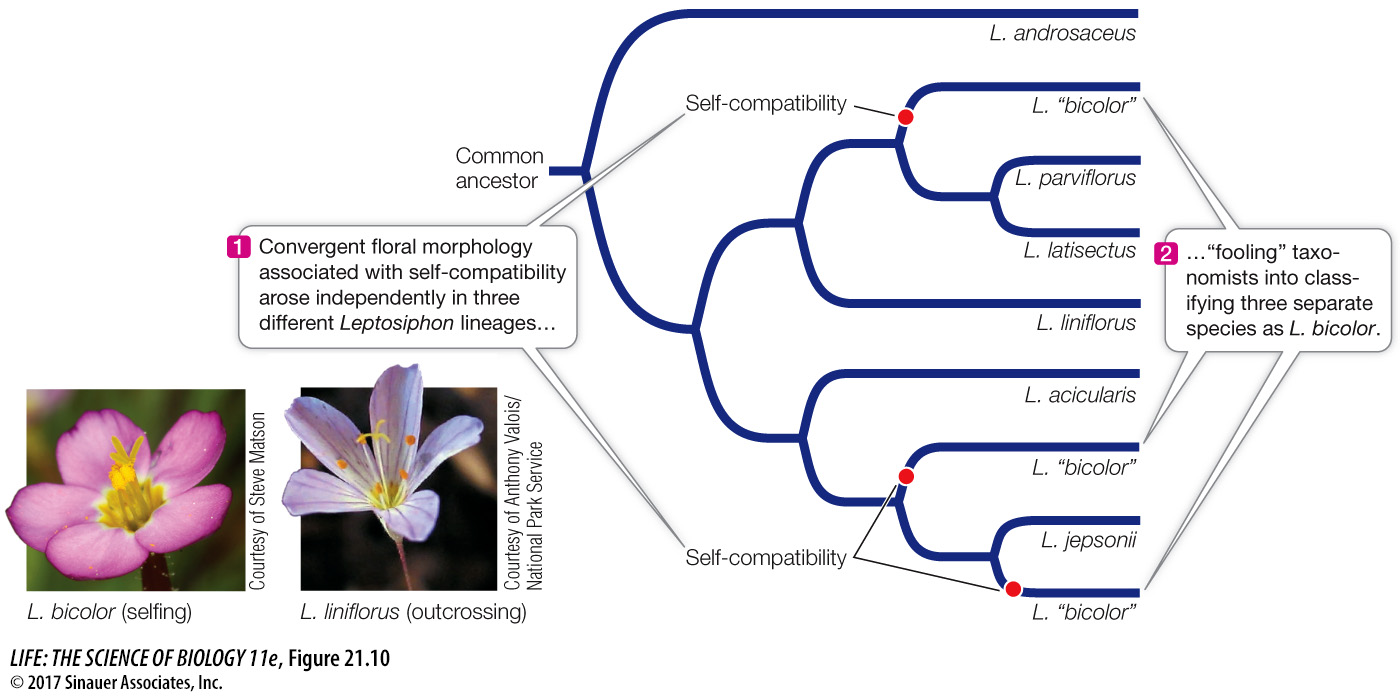Phylogenies can reveal convergent evolution
Like most animals, flowering plants (angiosperms) often reproduce by mating with another individual of the same species. But in many angiosperm species, the same individual produces both male and female gametes (contained within pollen and ovules, respectively). *Self-incompatible species have mechanisms to prevent fertilization of the ovule by the individual’s own pollen, and so must reproduce by outcrossing with another individual. Individuals of some species, however, regularly fertilize their ovules using their own pollen; they are self-fertilizing or selfing species, and their gametes are self-compatible.
*connect the concepts Some mechanisms of self-incompatibility are discussed in Key Concept 37.1.
The evolution of angiosperm fertilization mechanisms was examined in Leptosiphon, a genus in the phlox family that exhibits a diversity of mating systems and pollination mechanisms. The self-incompatible (outcrossing) species of Leptosiphon have long petals and are pollinated by long-tongued flies. In contrast, self-pollinating species have short petals and do not require insect pollinators to reproduce successfully. Using ribosomal DNA sequences, investigators reconstructed a phylogeny of this genus (Figure 21.10). They then determined whether each species was self-compatible by artificially pollinating flowers with the plant’s own pollen or with pollen from other individuals and observing whether viable seeds formed.

Figure 21.10 Phylogeny Reveals Convergent Evolution Self-compatibility apparently evolved independently three times among these species of the plant genus Leptosiphon. Because the appearance and structure of the flowers converged in the three selfing lineages, taxonomists mistakenly thought they were varieties of the same species.
The reconstructed phylogeny suggests that self-incompatibility is the ancestral state and that self-compatibility evolved three times within this group of Leptosiphon. The change to self-compatibility eliminated the plants’ dependence on an outside pollinator and has been accompanied by the evolution of reduced petal size. Indeed, the striking morphological similarity of the flowers in the self-compatible groups once led to their being classified as members of a single species (L. bicolor). Phylogenetic analysis, however, shows them to be members of three distinct lineages. From this information we can infer that self-compatibility and its associated floral structure are convergent in the three independent lineages that had been called L. bicolor.
